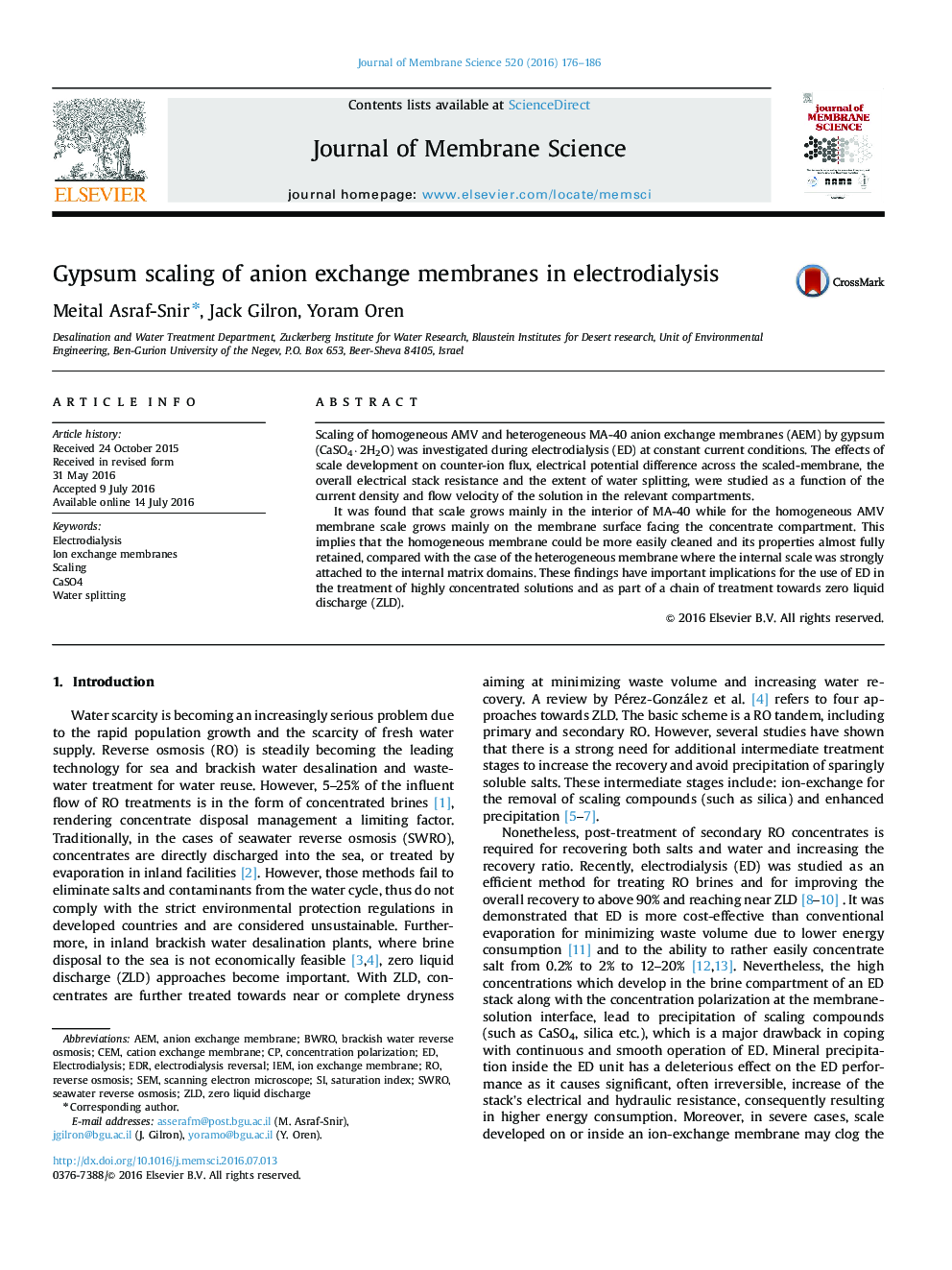| کد مقاله | کد نشریه | سال انتشار | مقاله انگلیسی | نسخه تمام متن |
|---|---|---|---|---|
| 632157 | 1455979 | 2016 | 11 صفحه PDF | دانلود رایگان |
• CaSO4 scaling of anion-exchange membranes during Electrodialysis (ED) was studied.
• Internal scaling leads to more severe effects on the ED process performance.
• Internal scale was essentially irreversible while surface scale was easily cleaned.
• CaSO4 scaling resulted in accelerated water splitting in the diluate side.
• Increased linear velocity leads to lower scaling.
Scaling of homogeneous AMV and heterogeneous MA-40 anion exchange membranes (AEM) by gypsum (CaSO4·2H2O) was investigated during electrodialysis (ED) at constant current conditions. The effects of scale development on counter-ion flux, electrical potential difference across the scaled-membrane, the overall electrical stack resistance and the extent of water splitting, were studied as a function of the current density and flow velocity of the solution in the relevant compartments.It was found that scale grows mainly in the interior of MA-40 while for the homogeneous AMV membrane scale grows mainly on the membrane surface facing the concentrate compartment. This implies that the homogeneous membrane could be more easily cleaned and its properties almost fully retained, compared with the case of the heterogeneous membrane where the internal scale was strongly attached to the internal matrix domains. These findings have important implications for the use of ED in the treatment of highly concentrated solutions and as part of a chain of treatment towards zero liquid discharge (ZLD).
Figure optionsDownload high-quality image (129 K)Download as PowerPoint slide
Journal: Journal of Membrane Science - Volume 520, 15 December 2016, Pages 176–186
